“The axe forgets but the tree remembers.”
The history of the world is full of emperors and empires, who left their imprints permanently on history. To achieve greatness, treasures, and glory, these men with sky-touching ambitions would go to any lengths, sometimes even inflicting a tremendous amount of pain and misery, to people whose language, culture or race were different from their own.
Whenever the stories of these tyrants are told, nature comes up with legendary heroes – who start as underdogs but manage to win against insurmountable odds to turn the tide of time. The Battle of the Teutoburg Forest is also one such a 2000-year-old story, that has become immortalized in the pages of history, due to the bravery of one man – Arminius, the hero of the Battle of the Teutoburg Forest.
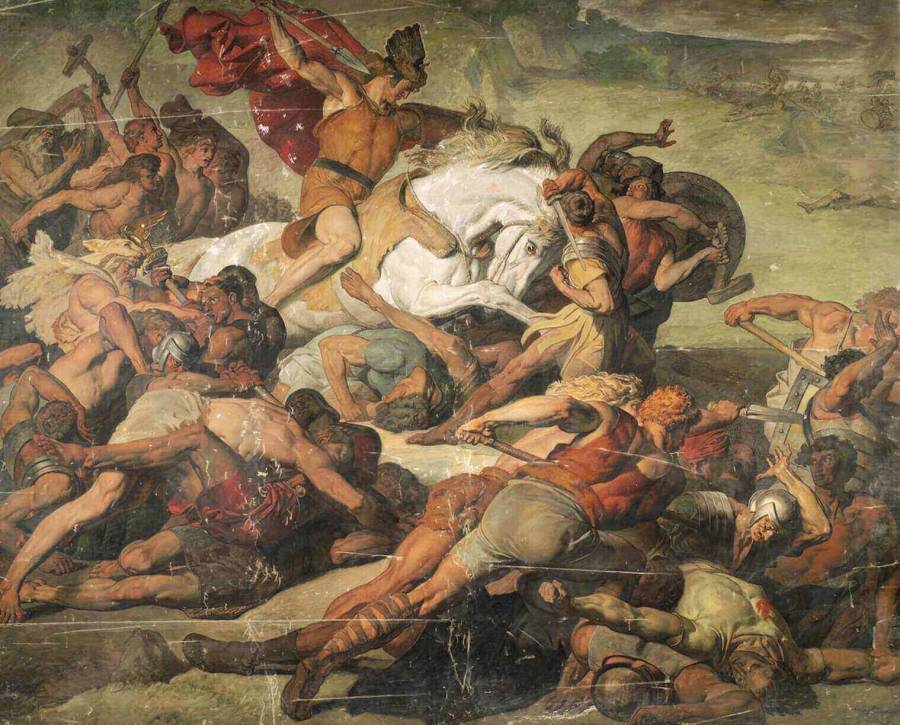
Before we go into the details of the Battle of the Teutoburg Forest, describing the background of the events which made this 2000-year-old battle, fought in a place which was considered still in the fringes of the so-called civilized world, would be important. That would take us back in a journey, to ancient Rome – where the republic had just died and a new empire was asserting itself in all corners of the known western world.
The story of the Battle of the Teutoburg Forest is as much the story of ambition of the Roman empire as it is the story of some brave Germanic warriors, who decided to defy the mightiest empire of the time and even succeeded in an impossible mission. However, the background of this epic battle was laid many years before even the preparations of this battle took place.
It was the conquest of Gaul made by Julius Caesar in the mid-1st century BC that brought the borders of the Roman empire close to the Germanic tribes. His successor Augustus Caesar, who became the first Roman Emperor decided to carry out the further expansion of the empire. This included the Northern Spain (in the west), Pannonia (in the north) and Judea (in the east).
It was the attempt to Romanise the Gallic lands conquered by Caesar and to explore & increase the border of the empire in the further north, that the Roman empire, would first encounter the Germanic tribes. The Roman empire had its eyes on the vast areas beyond the Rhine for a very long time. Augustus Caesar’s most trusted friend Agrippa made a network of roads attempting to reach the river Rhine.

Somewhere in 17/16 BC, the 5th Roman legion under Marcus Lollius came into conflict with the forces of the local tribesmen consisting of – the Sicambri, Usipetes and Tencteri tribes. The Romans were badly defeated and their eagle was captured. Losing the eagle, was a great insult for the emperor – Augustus, who realized the need for strengthening his position in Germania.
From 16 to 13 BC, Augustus took various measures to improve Rome’s position in the frontier region. In 13 BC Drusus – a stepson of Augustus and an experienced general on his own right was made the governor of Gaul. He soon erected several forts along the Rhine and later crossed the river to bring the lands beyond, under the rule of the Roman empire.
Drusus undertook multiple expeditions to Germania and brought many new areas, which were recently discovered and situated far north under the Roman dominion. Under his governance, Roman forces were able to reach as far as the Elbe river, which is situated in the east of modern Germany. Unfortunately, in 9 BC Drusus fell off from his horse and sustained a serious injury, due to which he died after some days. With the death of Drusus, the responsibility of consolidating and increasing Roman power in the new lands was given to his brother – Tiberius, who took the command of the army.
On the orders of Augustus, in 4 AD Tiberius campaigned in Northern Germany, conquering many different tribes like the – Canninefati, the Attuarii, and the Bructeri & the Cherusci. The last tribe was soon declared as the friends of Roman people. His campaign continued and in 5 AD he confronted the Chauci tribe. Tiberius attained great success in most of his campaigns and soon his army was moving throughout Germany largely unopposed.
By 6 AD most of the Germanic tribesmen were no longer considered a threat to the Roman Empire except the Marcomanni, who were under King Maroboduus. The Roman forces were planning a direct fight with him when a revolt in Illyricum forced Tiberius to change his focus elsewhere. A truce was declared where Maroboduus was recognized as the king by the Romans.
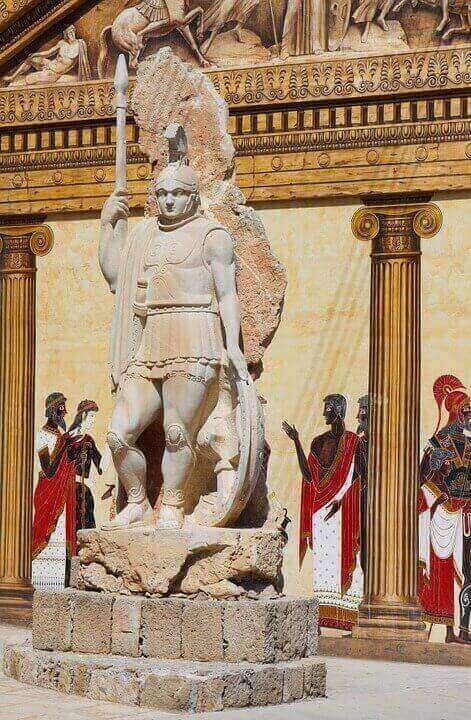
As Tiberius departed for Illyricum, Emperor Augustus appointed Publius Quinctilius Varus as the new governor. By this time Germania was believed to have been brought under Roman control totally and an able Roman administrator, who would be able to collect tax from the people and make the province more Roman was deemed suitable for the job. Publius Quinctilius Varus had in his past, proved himself to be a good administrator, but as a general commanding an army, he was not satisfactory.
Varus also suffered from another major handicap. Tiberius had also taken 8 out of 11 available legions with him, thus inherently decreasing the strength available for Varus, who was left with only the XVII, XVIII and XIX legions. However, as it was believed that there would be no more major fighting in the future, the emphasis was more on a skilled administrator than a skilled general. Unfortunately, this mistaken assumption would soon lead to a great misfortune for the Roman empire, stories of which would last for thousands of years to come.
One of the Germanic tribes – the Cherusci had become good allies of Rome after the conquest of the area. Arminius a son of the chieftain of this tribe was sent to Rome to study and learn the way of life of Romans, including their military strategies. These actions were forcefully imposed by the Romans, on the people of the provinces they conquered to ensure forced obedience of the parents (who were local chief) of these children, enabling Rome to increase their allies and strength.
These soldiers thus enlisted from conquered tribes or from foreign lands, formed part of the auxiliary units of the Roman army, which was usually headed by their local tribal leaders. However, Arminius knew in his heart that he was just a hostage, who was forced to follow the Romans against his wish.
After completion of his military training, Arminius was made a Roman citizen and an Equestrian, which was 2nd of the property-based classes of ancient Rome, ranking below the senatorial class. However, a cage made of gold, was still a cage, a fact that Arminius realized rather too well and his enemies would soon too.
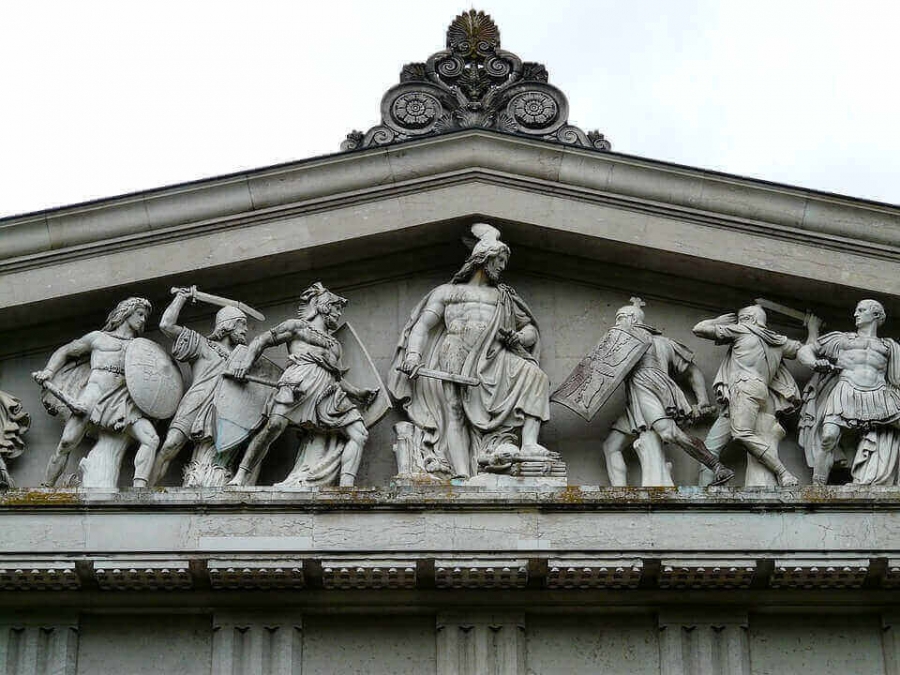
The attempts of the Romans in Romanizing the province of Germania along with their brutal suppression of the local population, who protested had given rise to discontent, that would be later used by Arminius in his advantage in forming an unlikely alliance of many different tribes, who were bound together by their hatred towards the Romans.
Still serving in the Roman military Arminius returned back to Germania, as a part of the Roman army stationed there. He soon became an apparently loyal advisor to Varus, who was in command of all the Roman affairs in Germania. As a squadron leader in Varus’s army, he was well versed in the military tactics and techniques used by the Roman forces.
Publius Quinctilius Varus was a well know person across the Roman empire. Besides being close to the emperor, he was also known as a capable administrator, which was largely due to the ruthless measures he followed to subdue the opponents of Rome, which included crucifixion too. His ruthlessness scared the people he governed and made him a much-hated figure, but the same got him admiration and respect from the Romans.
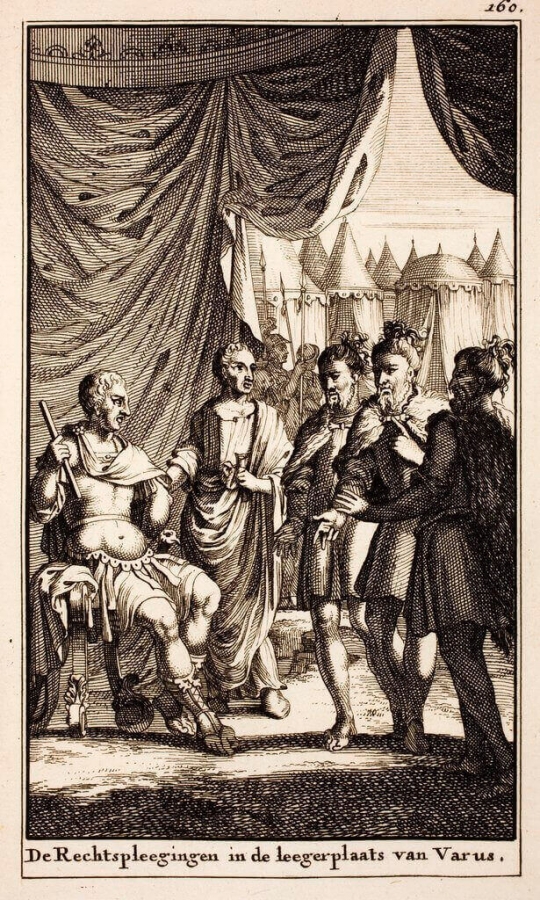
The number of soldiers fighting on each side has been controversial, but the Roman army supposedly had around 30,000 troops in total, compared to 20,000 to 30,000 soldiers fighting on the side of Arminius.
The year 9 AD would be a year that would be forever remembered in Roman history. However, the year began relatively successfully for the Roman forces posted in Germania. The Roman forces were freely patrolling and moving around Germania without facing any opposition or difficulty. The Romans had also started to enforce their laws on Germania, which included the collection of tax. The local tribesmen were growing increasingly frustrated and intolerant of the Roman empire.
As the summer progressed the first ominous news began to arrive to Varus. Apparently, small groups of Roman soldiers patrolling & working on developing infrastructures in the interior were being attacked and killed by Germanic people. This sudden betrayal left Varus confused. Unknown to him, Arminius was the man behind all these troubles.
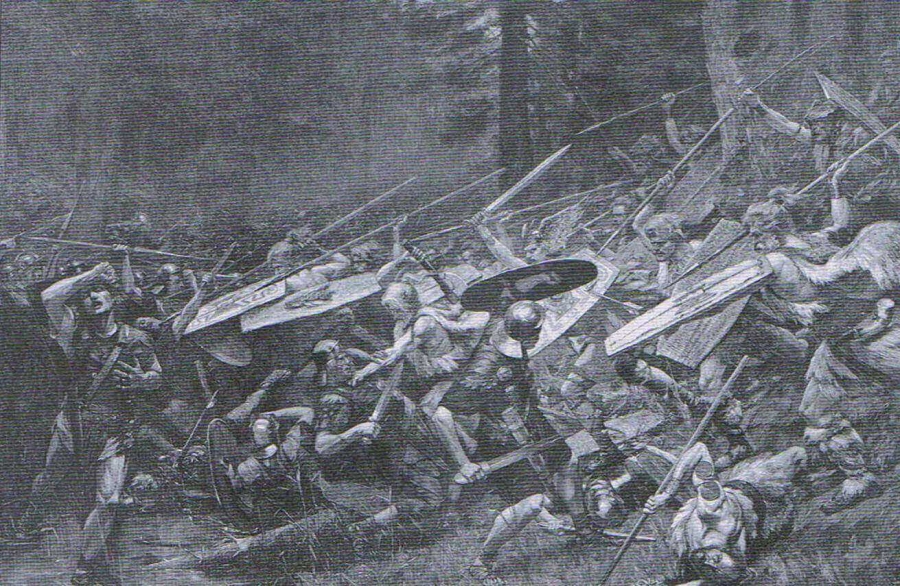
Arminius was totally disillusioned with the Roman dominion over his lands and the way his people were treated by the Roman empire. Unknown to Varus, Arminius had used his position as a Roman soldier and a trusted advisor of Varus to further his own interests. He was also the son of a Germanic chieftain, and as a Germanic prince, he was successful in uniting many different tribes of Germania to stand united against Rome.
Searching for allies hadn’t been easy for Arminius. Arminius was working with the Romans at the time and was viewed with deep distrust and outright hatred by many Germanic tribes. Arminius's father – Segimerus had been declared by other Germanic tribes to be a coward (a crime punishable by death under Germanic law), for bowing down to Roman rule, which also compromised Arminius’s position as a Germanic prince.
In spite of all the hardships that Arminius faced, in the end, out of the 50 free Germanic tribes a few decide to lend their support to Arminius. These were – the Cherusci, Chauci, Sicambri, Marsi, Chatti, Bructeri and the survivors of the Suebi tribe, who had been defeated by Julius Caesar almost 60 years back but now we're ready to take revenge. This unlikely alliance was cemented by a deep hatred for Varus and an opportunity to crush the Roman army and achieve freedom.
As Varus’s army began to march from their summer camp (from west of the Weser river) to their winter headquarters close to the Rhine, Arminius put in motion the plan that he had been making for a very long duration. News of revolt which had broken out reached Varus and it was brought to his attention that his intervention was extremely important to quell this revolt in time, before the winter sets in.
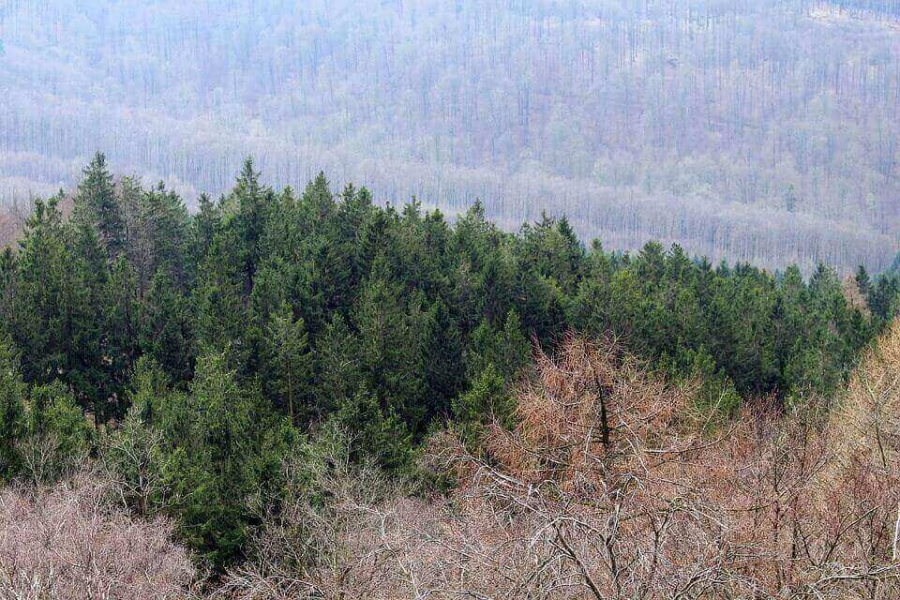
This news was just a plain lie spread by Arminius to set his plan into motion, while superficially showing his loyalty to Romans. As Varus was forced to change his plans and focus his concentration, on the mutiny in hand, he decided to march forward and quell the rebellion himself. Arminius for himself asked permission from Varus, to leave the main force and regroup the auxiliary forces, which was scattered at that point. Although Arminius left the main force, some of his chosen men stayed behind in the main Roman army as his spies.
Segestes, the father in law of Arminius however had warned Varus, the night before his forces left to crush the rebellion, that Arminius was planning to betray the Romans, and for this reason, Arminius and his close Germanic leaders should be taken into custody. This warning, unfortunately, was not taken seriously by Varus, who trusted Arminius and thought that Segestes was making up stories, because of his personal grudge against Arminius.
Arminius used his excuse to leave the main Roman column to organize and unify the Germanic soldiers who were hiding close by in the forests. The army of Varus was led into a territory that was unknown to Romans, by local guides, who were working on the behest of Arminius.
On the morning of 8th September 9 AD, the Roman army was marching into a perfectly laid trap, led by local guides, who were loyal to Arminius. They were passing through an area of forest, which had slowed their pace and their line of march had been stretched between 15 to 20 kilometers long. The people in the Roman army were totally unaware that they were surrounded by the Germanic soldiers, who were present inconspicuously in the forest.
During their march through the jungle, suddenly they found stones, arrows, and spears raining down on them from the jungles. The Romans who were not walking in combat formations, but side by side, were taken aback and soon found themselves attacked by the Germain soldiers rushing out from the Jungle, led by Arminius himself. The knowledge that Arminius had about the weak positions in the Roman forces allowed the Germanic soldiers to inflict maximum losses on the Romans.
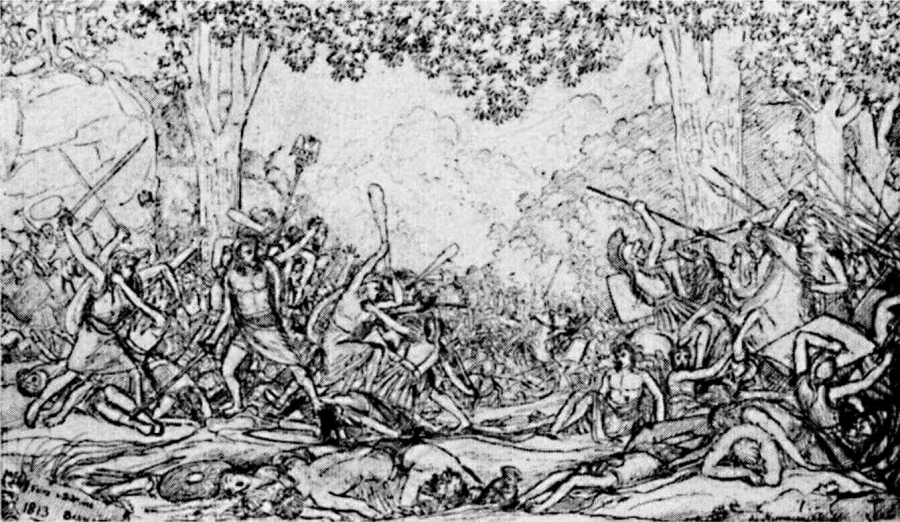
After inflicting heavy losses on the Romans, who were clearly not prepared for the attack, the Germanic army along with the guides, left behind by Arminius, withdrew into the jungle. Now the Romans were totally lost in the forest and with their injuries and losses, were in a very delicate situation.
The remaining Roman army, who were forced to move forward directionless, would soon face another challenge, this time from nature. Heavy rain added to the problems of the Roman army as they were suddenly drenched and were pushing through the mud on the ground. Finally reaching an open area, the Roman army finally set up a camp for the night. The Romans who had marched inside the forest numerically superior to the barbarians now were outnumbered by them, thanks to their losses.
The army without knowledgeable guides to guide through the unknown area was running short of options. Finally, the decision to move westwards through the forest was taken, the next day. The baggage and wounded were also left behind, to increase the speed. As the remaining army started moving the next morning, the Roman soldiers found that the rains had made the sinew strings of their bows slack and their archers could no longer use their bows, and due to waterlogging their shields and armor had also become heavy.
As the Roman forces were passing through the jungle, they encountered fallen trees & sea of mud in the area. As the Romans entered deeper into the jungle, they were once again attacked by the Germanic tribes. The Romans once again due to an inhospitable terrain were not able to use their famed military tactics. Arminius success the initial day had made some other enthusiastic Germanic tribe, who had previously remained neutral to join them thus increasing their strength. By the time the Germanic soldiers withdrew, a very few remaining Roman soldiers had remained alive.
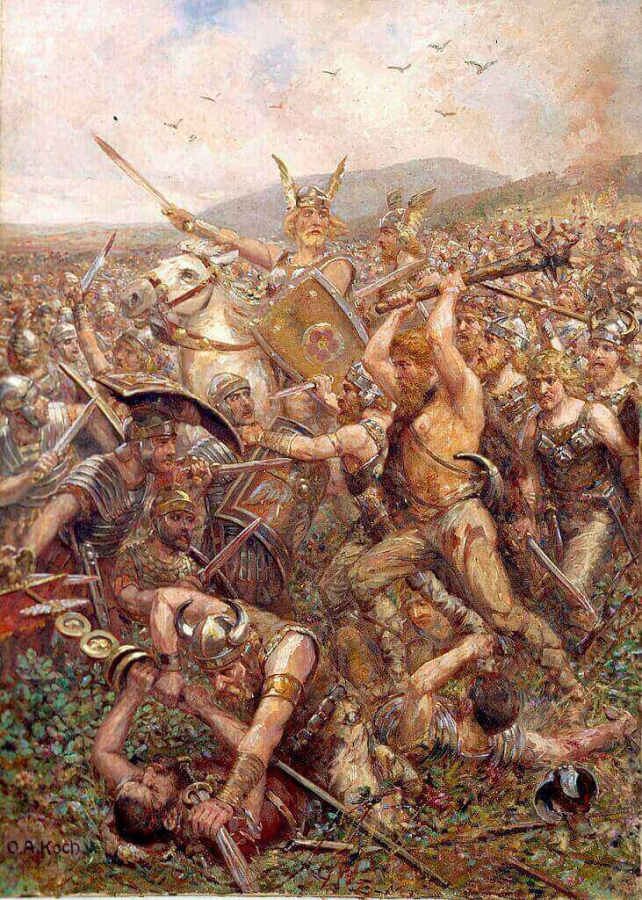
The remaining Roman force managed to find an open area by that evening, where they set camp. In the night some scouts reported back to Varus that they had detected a path where there did not appear to be any enemy activity. Varus immediately ordered his remaining forces to take the described path to escape. However, unknown to the Romans, they were once again marching into a trap laid down by Arminius.
As the Romans came out of the woods, they reached a stretch of sandy open area, that was bordered on one side by a vertical hill and on the other side by great marshy area. On moving forward, the Romans discover that an earthen wall blocked their path. It was at this point that the Germanic tribes, once again attacked the Roman army, from behind this cover of the wall.
The Romans made a desperate attempt to breakthrough through the wall but couldn’t succeed. The highest-ranking officer after Varus, Numonius Vala, abandoned the rest of the troops and tried to escape with the cavalry. However, these deserters would soon be caught by the Germanic cavalry and the Romans would die fighting. Once the Roman cavalry was eliminated, the Germanic cavalry attacked the remaining soldiers in the field and eliminated most of them.
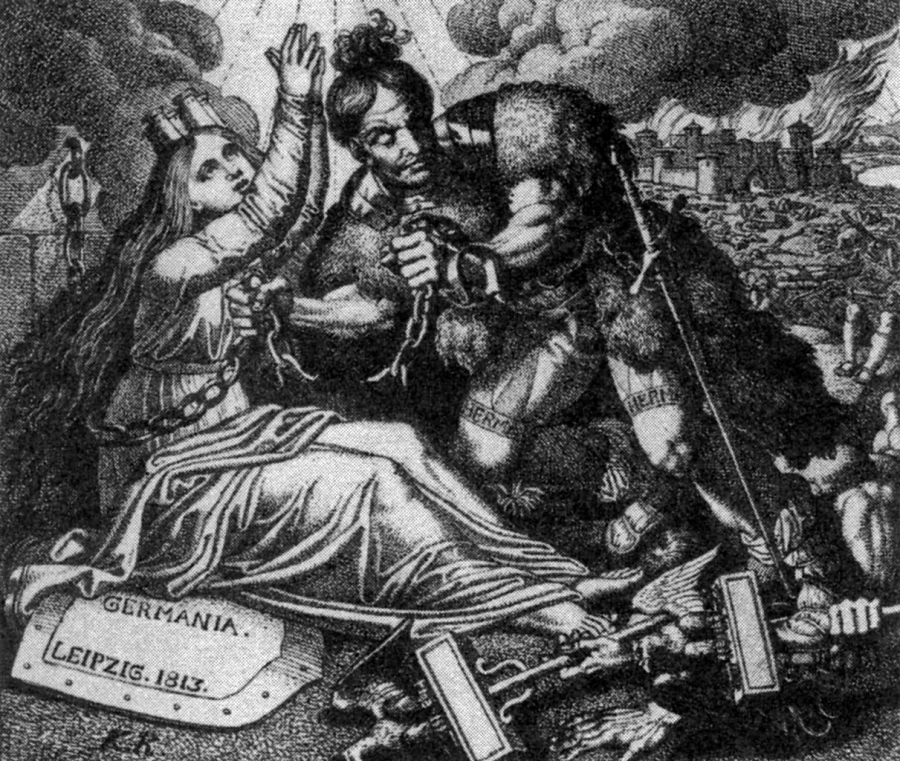
When Varus found that his defeat and capture was inevitable, he committed suicide. The vast majority of the Roman army perished. Some Battle of Teutoburg Forest survivors were taken as slaves, and others including officers were sacrificed to the pagan gods or executed in other ways. The loss of the 3 Roman legions would ensure that the alliance of the Germanic tribes, would get control over all the area in the east of the Rhine including the cities and forts present in the area.
The Battle of the Teutoburg Forest had ended with a great disaster for the Romans. An estimated 15,000 to 20,000 Roman soldiers perished. The Roman emperor Augustus was so shocked to hear about the news about the disastrous outcome of the Battle of the Teutoburg Forest, that he hit his head against the wall and repeatedly shouted in anger – “Quintilius Varus, give me back my legions” (according to the Roman historian Suetonius).
In 14 AD after the death of Augustus, his stepson – Tiberius ascended to the throne of the Roman empire. Tiberius’s nephew Germanicus launched massive raids to take revenge in Germania, for the defeat of the Battle of the Teutoburg Forest. In the many battles that followed, the Germanic tribes suffered heavy casualties and Romans had regained control over areas between the Rhine and Elbe river.
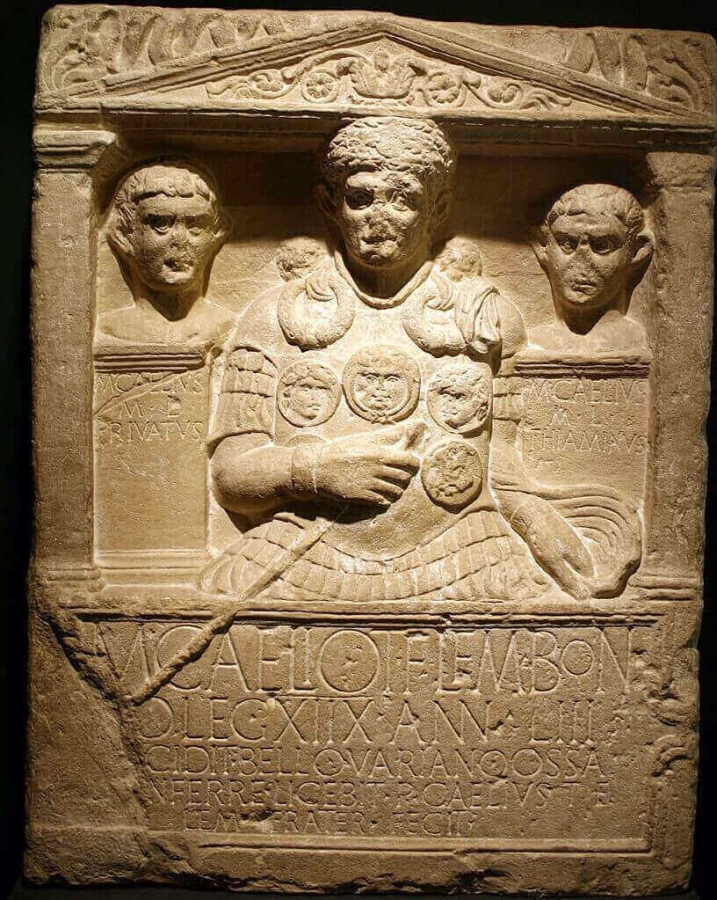
Germanicus campaign had been very successful and he also reached the site of the Battle of the Teutoburg Forest where he gave a decent burial to all the remains of all the Roman soldiers, whose corpses had been left to rot in the battlefield. The success of Germanicus also ensured that Arminius was no longer considered a threat to Rome.
However, the cost and risk of operating the Roman army beyond the Rhine, to control remote rural areas, was not thought to be financially cost-effective, hence Tiberius recalled Germanicus and the Roman control was strengthened and limited effectively to the Rhine only. The Battle of the Teutoburg Forest ensured that Rome would be never able to colonize the whole of Germany and the Roman army would never see again the 17th and the 19th legions being raised again and even eagle standards of all the 3 lost Roman legions could be recovered only decades later.
Modern archaeological excavations have shown that the Battle of Teutoburg Forest location is at the Kalkriese Hill in the district of Osnabruck, Lower Saxony, Germany. The Roman records of the time have revealed that the Roman army was marching northwest from the modern-day city of Detmold (administrative center of the district of Lippe), passing east of Osnabruck after camping in the area, before they were attacked.
The Battle of the Teutoburg Forest continued to affect future history long after it had ended. Arminius who later became famous as Hermann became a heroic symbol for the people of Germany, who fought against injustice and tyranny of an invading army and continued to inspire people even centuries later when Napoleon emerged as a threat in more modern times.
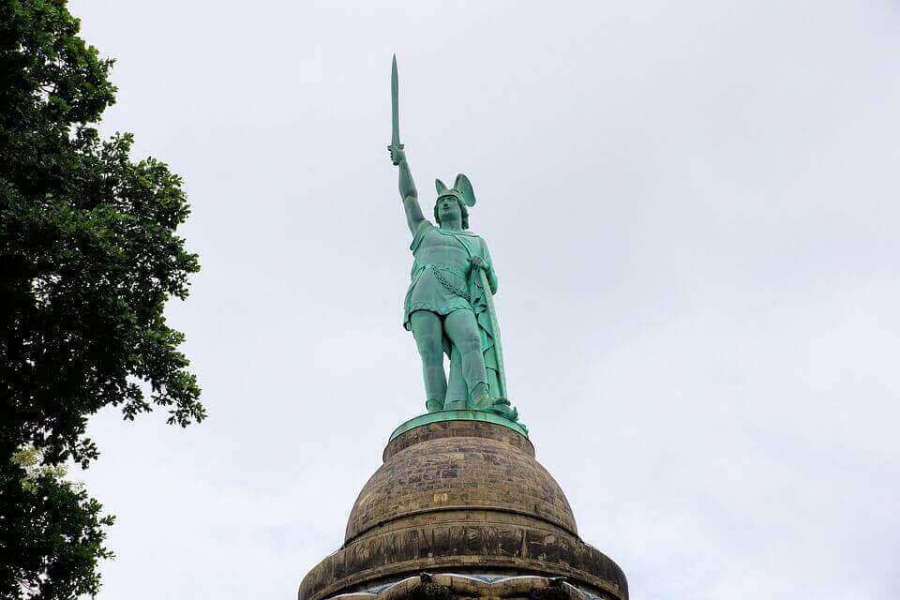
A monument dedicated to Arminius – Hermannsdenkmal (German for Hermann Monument) was constructed between 1838 to 1875 just southwest of Detmold in the district of Lippe, in Germany. The 53.46-meter monument (with the figure measuring 26.57 meters) is not just the highest statue of Germany, but also a reminder that a man like Arminius, who singlehandedly decided to challenge an empire, would always live on in the memory of the people, even almost 2000 years after he created history.